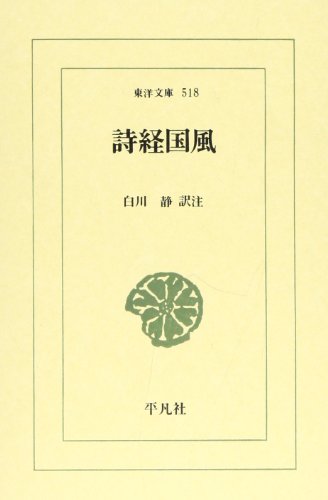1 0 0 0 「平安京・京都研究集会」参加記
- 著者
- 島田 雄介
- 出版者
- 地方史研究協議会
- 雑誌
- 地方史研究 (ISSN:05777542)
- 巻号頁・発行日
- vol.69, no.6, pp.79-82, 2019-12
- 著者
- 辰巳 公一
- 出版者
- 地方史研究協議会
- 雑誌
- 地方史研究 (ISSN:05777542)
- 巻号頁・発行日
- vol.69, no.6, pp.69-72, 2019-12
- 著者
- 半戸 文
- 出版者
- 地方史研究協議会
- 雑誌
- 地方史研究 (ISSN:05777542)
- 巻号頁・発行日
- vol.69, no.6, pp.73-78, 2019-12
- 著者
- 伊達 元成
- 出版者
- 地方史研究協議会
- 雑誌
- 地方史研究 (ISSN:05777542)
- 巻号頁・発行日
- vol.69, no.6, pp.64-68, 2019-12
- 著者
- 青木 然
- 出版者
- 地方史研究協議会
- 雑誌
- 地方史研究 (ISSN:05777542)
- 巻号頁・発行日
- vol.69, no.6, pp.60-63, 2019-12
- 著者
- 髙木 謙一
- 出版者
- 地方史研究協議会
- 雑誌
- 地方史研究 (ISSN:05777542)
- 巻号頁・発行日
- vol.69, no.6, pp.56-59, 2019-12
1 0 0 0 戦国期能登畠山氏と本願寺・一向一揆
- 著者
- 川名 俊
- 出版者
- 地方史研究協議会
- 雑誌
- 地方史研究 (ISSN:05777542)
- 巻号頁・発行日
- vol.69, no.6, pp.38-55, 2019-12
- 著者
- 野木 雄大
- 出版者
- 地方史研究協議会
- 雑誌
- 地方史研究 (ISSN:05777542)
- 巻号頁・発行日
- vol.69, no.6, pp.1-18, 2019-12
1 0 0 0 伊勢神宮の荘園支配と村落の再編
- 著者
- 朝比奈 新
- 出版者
- 地方史研究協議会
- 雑誌
- 地方史研究 (ISSN:05777542)
- 巻号頁・発行日
- vol.69, no.6, pp.19-37, 2019-12
- 著者
- 加藤 和歳
- 出版者
- 記録管理学会
- 雑誌
- レコード・マネジメント : 記録管理学会誌 = Records management : journal of the Records Management Society of Japan (ISSN:09154787)
- 巻号頁・発行日
- no.77, pp.27-53, 2019-12
- 著者
- 石川 尋代 村上 篤太郎 金子 晋丈
- 出版者
- 記録管理学会
- 雑誌
- レコード・マネジメント : 記録管理学会誌 = Records management : journal of the Records Management Society of Japan (ISSN:09154787)
- 巻号頁・発行日
- no.77, pp.54-65, 2019-12
- 著者
- 秋山 淳子
- 出版者
- 記録管理学会
- 雑誌
- レコード・マネジメント : 記録管理学会誌 = Records management : journal of the Records Management Society of Japan (ISSN:09154787)
- 巻号頁・発行日
- no.77, pp.3-7, 2019-12
- 著者
- 森本 祥子
- 出版者
- 記録管理学会
- 雑誌
- レコード・マネジメント : 記録管理学会誌 = Records management : journal of the Records Management Society of Japan (ISSN:09154787)
- 巻号頁・発行日
- no.77, pp.8-12, 2019-12
- 著者
- Sato Hiroshi 佐藤 暢
- 巻号頁・発行日
- 1998
Thesis (Ph. D. in Science)--University of Tsukuba, (A), no. 1863, 1998.3.23
1 0 0 0 IR ヒンディー語のいわゆる名詞句について--属格後置詞'ka' を中心に
- 著者
- 西岡 美樹
- 出版者
- 京都産業大学
- 雑誌
- 京都産業大学論集 人文科学系列 (ISSN:02879727)
- 巻号頁・発行日
- no.33, pp.74-98, 2005-03
本稿は,ヒンディー語の名詞句を取り上げ,その中の日本語の格助詞「の」に相当するヒンディー語の属格後置詞'kā'についての用法を分析し,その二重機能性を日本語の「の」と対照しながら明らかにするものである。1.はじめに2.ヒンディー語における名詞句の諸類型 A.名詞 + 名詞 B.名詞 + 属格後置詞/属格代名詞 + 名詞 C.形容詞 + 名詞 D.分詞 + 名詞 E.名詞 + 'vālā' + 名詞 F.斜格名詞句 + 名詞 G.関係詞節 H.同格詞節3.属格後置詞を伴う名詞句の構造と分析 (1)名詞 + 属格後置詞/属格代名詞 + 普通名詞 (2)名詞 + 属格後置詞/属格代名詞 + 動詞派生名詞 (3)名詞 + 属格後置詞/属格代名詞 + 斜格名詞句 + 動詞派生名詞 (4)斜格名詞句 + 属格後置詞 + 名詞 (5)動詞的名詞(不定詞)+ 属格後置詞 + 名詞 (6)独立属格4.属格後置詞'kā'の担う文法機能5.おわりに
1 0 0 0 『詩經』の原義的研究
- 著者
- 宮澤,淳一
- 出版者
- 日本ロシア文学会
- 雑誌
- ロシア語ロシア文学研究
- 巻号頁・発行日
- no.23, 1991-10-01
The Jerusalem section of The Master and Margarita (1929?-40) is a story of a man of agony, the cruel fifth Procurator of Judea, Pontius Pilate, who executed a vagrant philosopher, Yeshua Ha-Nozri, knowing his innocense. In this section, which is written as a historical novel independent of supernatural phenomena, there is an enigmatic figure who rules its world secretly: Afranius, the chief of the secret service to the Procurator. The enigma of Afranius lies in his false report to Pilate of the last moment of Yeshua on the cross: the chief didn't tell him the fact that Yeshua had accepted his atonement and died forgiving him for his conviction; on the contrary, he described Yeshua as if he had ridiculed Pilate and gave him the false words of the philosopher that "cowadice is one of the worst human sins." Having heard the report, Pilate became aware of his sin. so that he instigated the chief to assasinate the betrayer Judas of Karioth in revenge for Yeshua's death. In that sense, it was Afranius who kept Pilate on a string to let him do "evil" of the assasination. The figure of Pilate is not a typical Bulgakovian "coward" who often appears in the earlier novels of Bulgakov, such as the hero of The Red Crown (1992): Pilate is not a passive "coward" who finds no hope and is always in despair, but an active "coward" who tries to do anything, even "evil," to expiate one's sins like Frudov of The Flight (1925-8). At the end of the whole novel, Pilate is led to the world of "light or good" for his activeness. He stands in contrast to The Master of the Moscow section who is a typical passive "coward" so that he only has earned "rest". If we admit the systematical consistency of The Master and Margarita and analize the two "cowards" of the two sections in comparison, we must find out the figures who help the decision of their fates as well: in the Moscow section it is Woland, the Faustian devil, who leads The Master to the fate of "rest"; in the Jerusalem section the other who leads Pilate to the fate of "light"-must be Afranius! He is nothing but a Mephistophelian figure which is the "part of that power which eternally wills evil and eternally works good" (the epigraph from Faust). Thus, in The Master and Margarita there is not only a single Mephistopheles who controls the Moscow section and determine the fate of the hero, but also another Mephistopheles in the Jerusalem section to do the same work. Bulgakov has the device to give the function to the the devils to develop the both stories. His effort leads to the reconstruction of the whole novel as a newly organized evangel, "The Evangel by Bulgakov."

